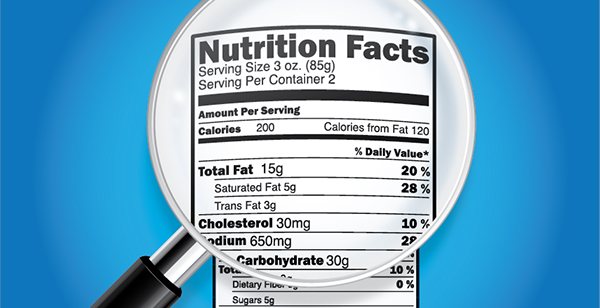In the local grocery stores, you can usually find many manufacturers of the same type of food, especially the boxed cereal aisle where Kellogg’s, Post and other brands are competing everyday with who has the healthiest, lowest sugar cereal in the market. Unfortunately, manufacturers have forgotten about the consumer and have led them down the deception aisle.
The first thing to be aware of a food label is the serving size. All the other specifications like calories, fat, sodium, etc. are based on the serving size. Of course, you can get only 1-2 grams of fat in some products if the serving size is the size of a quarter. We know good and well that many of us will eat 3-4 times that amount and increase our fat to about 8-10 grams per serving. Depending on the other ingredients and what the food is, this could be a lot of fat for one serving.
The calories listed are for the serving size only, not the entire package. Of course, some items may say serving size: 1 bar or 2 - 1” pieces. Please be aware that the serving size is very important for you to determine how many calories are in that meal.
Carbohydrates, fats and proteins are listed by the weight in grams. For example, 5 grams of protein in one serving would have 20 calories for that serving:
1 gram of protein = 4 calories
1 gram of carbohydrates = 4 calories
1 gram of fat = 9 calories
The sodium on the food label is something most people forget to look at. Unfortunately, many packaged products are loaded with sodium. Too much sodium in the diet can lead to water retention and possibly hypertension in some extreme cases. Be aware of a single serving size of sodium with 300 milligrams and above. The RDA (Recommended Daily Allowance) is 2400 milligrams per day. This can be high if you are trying to lose weight or need to watch your blood pressure. One tablespoon of soy sauce has 2000 milligrams alone. Can you imagine how much sodium you take in during one dinner out for Chinese food.
Ingredients on the food label are listed in order of their weight per serving. For example, an item with high fructose corn syrup as the first ingredient is going to be a high sugar, high carbohydrate food. You would then want to look at the sugar content on the label and make sure the serving is less than 20 grams. If it is above that, be careful. Sugar turns to fat if not used.
The fat content of food is usually broken down into total fat and saturated fat. The saturated fat, the fat from animal products, is what you need to stay away from. Good sources of fats are olive oil, peanut butter, avocados and almonds (not almond butter). Remember, when reading a food label, there are many ways for a manufacturer to list fats and sugars.
Here are a few examples:
Fats > Sugars
triglycerides > fructose
lard > lactose
oil (coconut, safflower) > maltose
hydrogenated vegetable shortening > dextrose
lecithin > sucrose
palm kernel oil > corn syrup
To determine the fat content in calories of a particular food, here is an example:
1 serving of Jiff peanut butter = 2 tablespoons; calories = 190, fat = 16 grams; 1 gram of fat = 9 calories therefore 16x9 = 144 calories in fat.
In conclusion, do not be a victim of all the manufacturer hype out there. All the low-fat, low sodium and fat-free products are causing consumers to add unwanted pounds to their bodies, just because it says, “fat-free”, does not mean that it is good for you. You still have to burn more calories than you take in to lose body fat.


